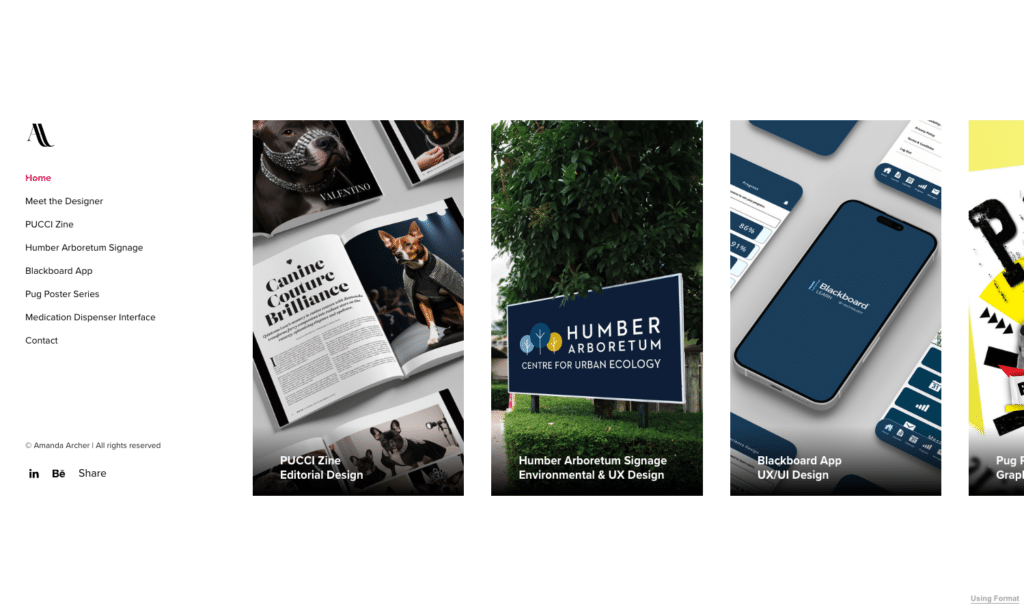Cataloguer ses œuvres d'art peut être une entreprise intimidante. Si vous travaillez depuis longtemps dans le domaine de la création, l'idée de passer au crible des années de projets professionnels et personnels peut sembler décourageante et épuisante, mais les avantages d'une telle démarche vont bien au-delà du catalogage initial.
Dans cet article, nous présenterons quelques-unes des principales raisons de cataloguer votre art, ainsi que les avantages qui en découlent, et nous partagerons avec vous quelques conseils et astuces pour commencer.
Pourquoi est-il important de cataloguer mon art ?
Le catalogage de vos œuvres d'art vous permet de bénéficier d'avantages allant au-delà de la simple création d'un répertoire de vos œuvres. Voici quelques raisons pour lesquelles vous pourriez envisager de prendre le temps de cataloguer vos œuvres :
Organisation
L'organisation est avant tout le principal avantage de l'organisation de votre travail. Il est facile de laisser des dossiers et des fichiers aux noms désordonnés s'empiler sur votre disque dur. Si vous y restez assez longtemps, vous aurez plus de chance de trouver une aiguille dans une botte de foin que de retrouver ce JPEG spécifique datant d'il y a 20 projets.
Mais si vous prenez le temps d'organiser votre travail de manière à ce qu'il soit facile à consulter, vous vous épargnerez beaucoup de stress - et plus important encore, temps-à l'avenir.
Documentation
Le catalogage ne consiste pas seulement à pouvoir retrouver facilement ses fichiers. Il s'agit également de conserver un enregistrement complet des informations pertinentes concernant vos projets et vos œuvres individuelles. Des détails tels que le titre, les dimensions, le support, le client, la date de création et d'autres informations pertinentes sont précieux pour l'archivage et les références futures.
Protection de l'environnement
Le stockage et la documentation appropriés de votre travail contribuent à sauvegarder votre propriété intellectuelle et à fournir des preuves de la propriété et de l'authenticité de votre travail. Aucune personne créative n'aime imaginer qu'elle se retrouvera un jour dans une situation où son travail sera volé ou utilisé sans son autorisation, mais il est important d'être prêt à toute éventualité.
Promotion
Un ensemble de travaux bien répertoriés peut servir de portfolio à part entière, ce qui facilite la présentation de votre travail à des clients potentiels, à des galeries et à des opportunités d'exposition.

Comment commencer à cataloguer votre art
Si vous êtes confronté à un grand nombre de fichiers sur votre ordinateur - des gigaoctets, voire des téraoctets de données -, il peut être difficile de savoir par où commencer pour les cataloguer. Votre travail est peut-être réparti sur plusieurs appareils et disques durs, ou une grande partie de votre travail n'a pas encore été numérisée. Quoi qu'il en soit, il existe plusieurs étapes à suivre pour faciliter le processus.
Créer un inventaire numérique
La première étape consiste à s'assurer que toutes les œuvres sont accessibles sous forme numérique. Pour certains supports (par exemple, la sculpture, les installations à grande échelle, les peintures murales), documenter votre travail peut être une entreprise de plus grande envergure, mais elle est nécessaire pour cataloguer et préserver correctement votre travail.
En général, vous voudrez des scans ou des photographies de haute qualité de tout travail physique que vous possédez. Si vous êtes architecte, cela signifie des photos de haute qualité des structures sur lesquelles vous avez travaillé. Si vous travaillez dans le domaine de la gravure, vous devez viser des numérisations de haute qualité capables de reproduire correctement les profils de couleur de vos œuvres. Si vous peignez des peintures murales à grande échelle, vous aurez probablement besoin de photos panoramiques de votre travail en plus des photos de détail à haute résolution.
Selon le type de travail que vous produisez, essayez de réfléchir à la manière la plus efficace de le représenter dans un format numérique, et compilez-le du mieux que vous pouvez.
Organiser par catégories
Une fois votre travail numérisé, il est temps de commencer à l'organiser. Chacun a une méthode qui lui convient, mais voici quelques-unes des principales façons d'organiser votre travail en catégories :
- Date : Organisez votre travail de manière granulaire en fonction de l'heure à laquelle il a été créé. Vous pouvez avoir des dossiers pour différentes années, mois ou même jours, en fonction du volume de votre production créative.
- Discipline : De nombreux créatifs s'adonnent à plusieurs disciplines créatives. Le fait de disposer d'espaces distincts pour ces disciplines peut faciliter la mémorisation de votre travail.
- Style et support : Vous pouvez décomposer votre travail en styles ou en supports. Pour un photographe, il peut s'agir de photos argentiques ou numériques.
- Client et projet : Envisagez de conserver votre travail personnel et professionnel dans des dossiers distincts, ainsi que des sous-dossiers pour des clients spécifiques ou des projets personnels.
Il ne s'agit là que de quelques exemples de la manière dont vous pouvez classer votre travail. Selon le type d'art que vous créez, il peut y avoir différentes catégories et sous-catégories qui vous conviennent. Idéalement, lorsque vous compilerez votre travail à l'étape précédente, vous déterminerez également le type de catégorisation qui vous convient le mieux.
Établir une convention de dénomination
Répartir votre travail dans des catégories précises n'est qu'un début. Vos dossiers et sous-dossiers doivent être clairement étiquetés afin d'être facilement repérables. De même, une convention de dénomination cohérente pour vos fichiers individuels vous permettra de les retrouver plus facilement par la suite.
Ainsi, si vous ne vous souvenez plus du dossier dans lequel se trouve votre travail, vous pouvez toujours le rechercher à l'aide de mots-clés susceptibles de figurer dans son nom de fichier. Vous pouvez élaborer une convention de dénomination similaire à celle que vous avez adoptée pour catégoriser votre travail. L'utilisation de la date, de la discipline, du support ou du nom du client dans vos noms de fichiers vous aidera à organiser votre travail de manière efficace.
Documenter les détails de l'œuvre d'art
Des détails tels que le support de votre art, le processus qui le sous-tend, le lieu où une photographie ou une peinture a été créée, une déclaration de l'artiste ou l'objectif du client. Tous ces détails fournissent un contexte à votre travail et sont importants pour conserver des documents précis à des fins d'archivage.
Selon la nature de votre travail, ces informations peuvent être ajoutées sous forme de métadonnées, c'est-à-dire des informations intégrées dans des fichiers d'images spécifiques, ou sous forme de documents textuels distincts accompagnant leurs œuvres d'art respectives.
Utiliser un logiciel de catalogage
En plus de conserver les fichiers sur votre ordinateur ou sur des disques durs séparés, vous pouvez également envisager d'utiliser un logiciel de catalogage. Il peut s'agir d'un logiciel en nuage pour sauvegarder vos fichiers, ou même d'un simple site web de portfolio.
Format offre de nombreux outils aux créatifs pour cataloguer leur travail, à la fois comme un portefeuille en direct, ainsi que des options de stockage de sauvegarde et des solutions de flux de travail professionnel. Nous y reviendrons plus en détail un peu plus loin dans cet article.
Mises à jour régulières
La qualité de votre catalogage dépend de la façon dont vous le maintenez. Une fois le catalogage initial effectué, vous devrez continuer à cataloguer votre travail au fur et à mesure que vous le créez. Vous pouvez le faire après chaque projet ou plusieurs fois au cours de l'année.
En général, la meilleure pratique consiste à cataloguer votre travail dès que possible, afin que vos projets ne s'empilent pas. Remettre à plus tard l'organisation de votre travail ne fera qu'alourdir la tâche, ce qui facilitera le report d'un catalogage adéquat.
Sauvegarde et sécurité
Une fois que vous aurez pris la peine de classer et de cataloguer tout votre travail, vous voudrez vous assurer qu'il y a le moins de chances possible que vous le perdiez. Pour ce faire, vous devez envisager des stratégies de sauvegarde telles que l'utilisation de plusieurs disques durs externes au cas où votre ordinateur tomberait en panne ou au cas où l'un des disques durs tomberait en panne.
Vous pouvez également envisager le stockage en nuage. Il s'agit souvent d'un service tiers payant qui vous permet de télécharger votre travail pour le conserver en toute sécurité. Comme votre travail est conservé dans un espace numérique qui n'est pas directement connecté à votre ordinateur, il sera en sécurité même s'il arrivait quelque chose à votre poste de travail.
Choisir la bonne plateforme de catalogage
Format propose plusieurs solutions aux créateurs qui souhaitent cataloguer leur travail. Que vous soyez intéressé par des solutions de stockage de sauvegarde, des outils de flux de travail pour vos clients ou par la création d'une archive publique de votre art, notre logiciel facilite la maintenance d'un catalogue fonctionnel et accessible de médias numériques.
Si vous souhaitez commencer à archiver votre travail à l'aide de Format, la première étape consiste à créer un compte et à lancer un projet d'archivage. Essai gratuit de 14 jours. Ensuite, vous pouvez archiver votre travail en utilisant l'une des méthodes ci-dessous.
Stockage
Les Format Fonction de stockage est un guichet unique pour la sauvegarde de votre travail basé sur l'image. Vous pouvez facilement copier les images déjà présentes sur les pages de votre site dans des dossiers de stockage personnalisés, ou télécharger des images directement depuis votre ordinateur ou Dropbox.
Selon le niveau de plan choisi, la fonction de stockage permet de stocker jusqu'à 1 To d'images, avec une limite de taille de fichier individuel de 100 Mo.
Il peut s'agir d'un service de soutien pour stocker votre travail et faciliter le processus d'archivage. Pour en savoir plus sur la manière de télécharger des images dans la fonction de stockage de Format, y compris sur les types de fichiers acceptés, ici.
Galeries des clients
A Galerie des clients est votre meilleur outil de flux de travail pour gérer la livraison et l'affichage des images pour les clients et les projets professionnels. Avec les galeries de clients, vous pouvez assigner des projets à des profils de clients, partager des galeries par le biais d'e-mails automatisés et activer des notifications pour l'activité des clients.
Les galeries de clients sont le meilleur moyen, et le plus professionnel, de partager votre travail avec vos clients tout en garantissant la protection de votre propriété intellectuelle. C'est pourquoi elles constituent également l'un des meilleurs moyens d'archiver votre travail.
Dans les paramètres de chaque galerie de clients, vous avez la possibilité d'activer les légendes qui affichent les noms de fichiers de vos images, d'ajouter des filigranes, de définir des mots de passe et même de créer des pages de connexion personnalisées. Vous pouvez également suivre l'activité des visiteurs (favoris ou téléchargements si l'option est activée), ce qui peut s'avérer utile pour vos archives.
Le portefeuille
Le dernier point, mais non le moindre, est votre Site portfolio. Il s'agit de notre service principal et le plus robuste, qui offre le plus grand nombre de possibilités d'archivage créatif de votre travail.
Notre service Portfolio propose trois types de pages principales, notamment
- Pages de la galerie : Des galeries d'images simples pour présenter vos projets dans un style minimaliste et épuré.
- Pages personnalisées : Glissez-déposez des dizaines de types d'images, de textes, de vidéos, de formulaires et de blocs de médias sociaux sur une page pour qu'elle réponde au mieux à vos besoins.
- Collection Pages : Un centre de navigation où vous pouvez ajouter des liens d'images qui mènent à d'autres pages de votre site.
Dans l'onglet Pages, vous pouvez également créer des dossiers de sous-menus que vous pouvez utiliser pour regrouper proprement des ensembles de pages par thème. Il est également possible de créer un Blogqui peut s'avérer utile pour archiver les projets dont vous souhaitez parler plus en détail. Les articles de blog sont également consultables grâce à l'utilisation d'étiquettes, ce qui aidera les visiteurs de votre site à retrouver d'anciens projets.
Avantages de l'utilisation de Format pour cataloguer votre travail
Avec autant d'options disponibles pour cataloguer votre travail, le choix de Format élimine le problème de la gestion de plusieurs abonnements. Au lieu d'avoir besoin d'un abonnement différent pour votre site, vos épreuves et vos solutions de sauvegarde, tout peut être géré directement dans votre compte Format.
Ce processus rationalisé est parfait pour les professionnels comme pour les passionnés. Professionnels photographes et cinéastes peuvent facilement communiquer avec leurs clients par le biais de galeries de clients, et les professionnels de la création spécialisés dans des domaines tels que les l'art, conceptionou la mode peuvent présenter leur travail sous la forme d'une galerie numérique. Et grâce à notre fonction de stockage, vous n'aurez plus jamais à vous soucier de perdre ou d'égarer un projet.
Grâce aux conseils et astuces énumérés ci-dessus, ainsi qu'à l'abondance des ressources disponibles avec Format, vous êtes prêt à commencer à cataloguer et à archiver votre travail. Que vous utilisiez le système de gestion de fichiers de votre ordinateur ou notre fonction Galeries clients, les étapes énumérées ci-dessus vous aideront à réduire le stress lié à l'organisation de votre travail créatif.
Format s'engage à rendre ce processus aussi rationnel et simple que possible, et continue à travailler sur des améliorations pour tous les créatifs. En attendant, si vous cherchez plus de soutien, vous pouvez consulter notre site web Collection "Getting Started dans notre centre d'aide.
Vous pouvez également jeter un coup d'œil à certains de nos précédents articles de magazine, comme le Les meilleurs organisateurs de photos gratuits de 2025.














